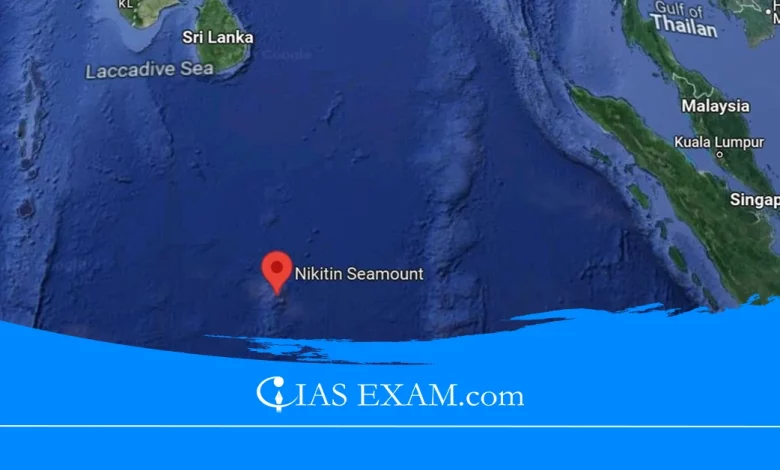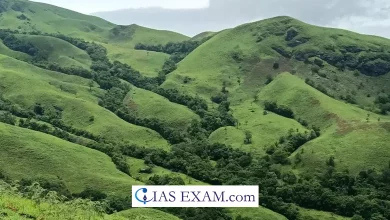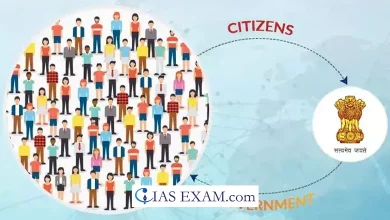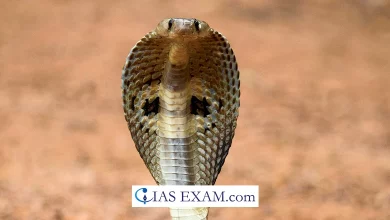Daily Current Affairs for UPSC
India to explore Nikitin Seamount (AN Seamount)
Syllabus- Geography [GS Paper-1]

Context
India has recently applied to the International Seabed Authority (ISBA), Jamaica, for rights to explore Nikitin Seamount (AN Seamount), which is a cobalt-rich crust long known as the Afanasy.
About
- Claims by Sri Lanka: The area of the application by India lies entirely in an area submitted to the Commission on the Limits of the Continental Shelf by Sri Lanka.
- Other Applications: Along with the application for AN Seamount, India has also applied for permission to discover the Carlsberg Ridge in the Central Indian Ocean to investigate polymetallic sulphides, which are massive smoking mounds near hydrothermal vents which can be reportedly rich in copper, zinc, gold and silver.
Afanasy Nikitin Seamount (AN Seamount)
- The AN Seamount is a structural feature (400 km-long and 150 km-wide) in the Central Indian Basin, located approximately 3,000 km far from India’s coast.
- From an oceanic depth of approximately 4,800 km it rises to about 1,200 metre and — as surveys from about two decades set up — rich in deposits of cobalt, nickel, manganese and copper.
Why has India Applied for Exploration Rights?
- Potential of Indian Ocean: The Indian Ocean promises outstanding potential reserves and that expanse has motivated the government of India to increase its scientific exploration of the ocean’s depths.
- Increasing Need for Critical Minerals: The World Bank has projected that extraction of critical minerals will increase fivefold by 2050 to satisfy the demand for clean energy technologies.
- India has a short-term target of growing its renewables energy to 500 gigawatts by 2030, and meeting 50% of its power necessities from renewables by then, with the long-term intention of achieving net zero emissions by 2070.
- To meet these goals, India will need to secure critical minerals from all feasible sources along with the deep seabed.
- Geopolitical Concerns about China’s Dominance: China currently controls a 100% of the refined supply of natural graphite and dysprosium, 70% of cobalt and nearly 60% of all processed lithium and manganese.
- There are geopolitical concerns about China’s dominance in processing those minerals before they enter the supply chain.
Extraction from Open Seas
- Open ocean, that means ocean — whose air, surface and sea-bed — where no country can claim sovereignty.
- Around 60% of the world’s seas are open ocean and even though believed to be rich in a variety of mineral wealth, the costs and challenges of extraction are prohibitive.
- For any real extraction to take place in open oceans, countries should practice first for an exploration licence to the ISBA.
- Currently no country has commercially extracted resources from open oceans.
Rights over Continental Shelf
- India has claimed for its continental shelf as much as 350 nautical miles from its border however has yet to be offered so.
- Some ocean-bound states may also have a natural stretch of land, connecting their border and the threshold of the deep ocean that extends past the 200 nautical mile, as part of their continental shelf.
- Scientific Evidence: To claim on continental shelf a country needs to deliver a detailed scientific rationale, complete with underwater maps and surveys to expose the unbroken land-hook up with a scientific commission appointed by the ISBA.
- Exploration Rights: If this type of claim is authorised, then such a country could have first to discover and take advantage of the living and non-living assets in the region.
- Normally, claims to the continental shelf do not extend beyond 350 nautical miles from the country’s coast.
India’s Maritime Zone
- India’s maritime zone refers to the maritime boundaries and areas under its jurisdiction in the surrounding seas and oceans.
- India has a coastline of 7,517 Km along with island territories.
- Territorial Waters (12 Nautical Miles): The territorial waters of India extend up to 12 nautical miles from the baseline.
- In this region, India exercises full sovereignty, and it consists of the country’s coastal regions and ports.
- Contiguous Zone (24 Nautical Miles): Beyond the territorial waters, there may be a contiguous quarter that extends an additional 12 nautical miles.
- In this zone, India can take action to prevent or punish infringements on customs, financial, immigration, or sanitary legal guidelines in its territory or territorial sea.
- Exclusive Economic Zone (EEZ): The EEZ extends up to 200 nautical miles from the baseline.
- In this region, India has the special rights for exploring, exploiting, conserving, and dealing with herbal assets, which include fisheries and hydrocarbons.
- High Seas: If a location isn’t formally categorised as being part of a country’s continental shelf, then it’s far taken into consideration ‘high sea’ and open to any country to approach the ISBA and ask permission for exploration.
Source: The Hindu
UPSC Mains Practice Question
Q.Critically evaluate the various resources of the oceans which can be harnessed to meet the resource crisis in the world. (2014)





.png)



